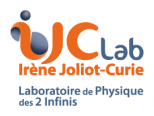
The infinitely large and the infinitely small are the natural limits of human perception. While situated at opposite extremes in terms of size, the two concepts are united by the fact that they are the frontiers of scientific inquiry and by the aspiration that one day the phenomena governing the two realms will be described by a universal theory of fundamental interactions. At the same time, when appearing together in the title of a scientific publication, event or even institution (such as the “Laboratoire de Physique de 2 Infinis Irène Joliot-Curie”) the two extremes paint the picture of a broad range of scientific topics which are being pursued by the community behind. This is the case of a recent book published by the IN2P3, called “Etonnants Infinis” [Astonishing infinities], edited by Ursula Bassler. As stated on the IN2P3 webpage, “in thirty short and abundantly illustrated chapters, this work presents what we know already and what we still research” in topics ranging from the Cosmos, present and past, to matter, antimatter, nuclei, elementary particles and the theories describing them.
One interesting limit in atomic and nuclear physics, although not infinite, is the upper limit in atomic number of the periodic table of the elements. Nowadays, the creation and study of the heaviest elements is almost entirely a nuclear-physics topic, driven by research at accelerator facilities, where isotopes of the so-called superheavy elements are synthesized at truly minute rates. A glimpse into this fascinating field, its history and current challenges is given in a chapter written for the “Etonnants Infinis” by Araceli Lopez-Martens from the Nuclear Pole of IJCLab, called “Ce numéro n’est pas encore attribué” [This number is not yet attributed]. Recently, with the occasion of the International Day of Women and Girls in Science, she has also been interviewed by the IN2P3 concerning her work. An excerpt from the interview can be seen here.






